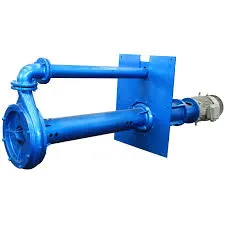Punjabi
- Afrikaans
- Albanian
- Amharic
- Arabic
- Armenian
- Azerbaijani
- Basque
- Belarusian
- Bengali
- Bosnian
- Bulgarian
- Catalan
- Cebuano
- Corsican
- Croatian
- Czech
- Danish
- Dutch
- English
- Esperanto
- Estonian
- Finnish
- French
- Frisian
- Galician
- Georgian
- German
- Greek
- Gujarati
- Haitian Creole
- hausa
- hawaiian
- Hebrew
- Hindi
- Miao
- Hungarian
- Icelandic
- igbo
- Indonesian
- irish
- Italian
- Japanese
- Javanese
- Kannada
- kazakh
- Khmer
- Rwandese
- Korean
- Kurdish
- Kyrgyz
- Lao
- Latin
- Latvian
- Lithuanian
- Luxembourgish
- Macedonian
- Malgashi
- Malay
- Malayalam
- Maltese
- Maori
- Marathi
- Mongolian
- Myanmar
- Nepali
- Norwegian
- Norwegian
- Occitan
- Pashto
- Persian
- Polish
- Portuguese
- Punjabi
- Romanian
- Russian
- Samoan
- Scottish Gaelic
- Serbian
- Sesotho
- Shona
- Sindhi
- Sinhala
- Slovak
- Slovenian
- Somali
- Spanish
- Sundanese
- Swahili
- Swedish
- Tagalog
- Tajik
- Tamil
- Tatar
- Telugu
- Thai
- Turkish
- Turkmen
- Ukrainian
- Urdu
- Uighur
- Uzbek
- Vietnamese
- Welsh
- Bantu
- Yiddish
- Yoruba
- Zulu
Telephone: +86 13120555503
Email: frank@cypump.com
ਦਸੰ. . 20, 2024 13:23 Back to list
sewage ejector tank
Understanding Sewage Ejector Tanks Essential Components for Wastewater Management
Sewage ejector tanks play a crucial role in today's wastewater management systems, particularly in residential and commercial properties that are located below the level of the municipal sewer line. Unlike conventional gravity-based systems, sewage ejector tanks provide a reliable way to transport waste and sewage to higher elevations, ensuring that homes and businesses remain connected to wastewater treatment facilities. This article delves into the functioning, importance, and maintenance of sewage ejector tanks.
What is a Sewage Ejector Tank?
A sewage ejector tank is a specialized sewage pump system that helps move wastewater from lower-level drains to the municipal sewer line. It is typically installed in basements or in properties where gravity alone cannot facilitate the adequate movement of wastewater. The system consists of a sealed tank that collects sewage, a pump that ejects the waste, and a piping system that directs the waste upward and into the sewer system.
How Do Sewage Ejector Tanks Work?
The operation of a sewage ejector tank is straightforward yet effective. When wastewater from sinks, toilets, or drains accumulates in the tank, a float switch within the tank monitors the water level. Once the water reaches a certain height, the float activates the pump. The pump then expels the sewage through a discharge pipe, forcing it upward into the municipal sewer line. This process ensures that wastewater is efficiently transferred, preventing any backflow or overflow issues within the home.
The Importance of Sewage Ejector Tanks
1. Prevention of Backflow One of the primary functions of sewage ejector tanks is to prevent backflow. In systems without ejector pumps, wastewater can back up into homes, leading to unsanitary conditions and expensive cleanup efforts. Ejector tanks effectively mitigate this risk.
2. Facilitating Waste Disposal In properties with bathrooms or laundry facilities located in basements or other low-lying areas, sewage ejector tanks are essential. They allow for the proper disposal of waste, enabling homeowners to maximize their living space comfortably.
3. Supporting Environmental Health By ensuring that sewage is disposed of properly, ejector tanks help maintain public health and environmental standards. Proper waste disposal reduces the risk of contaminating local groundwater and surrounding ecosystems.
sewage ejector tank

Maintenance of Sewage Ejector Tanks
While sewage ejector tanks are robust systems, regular maintenance is crucial for optimal performance. Here are some tips
1. Regular Inspections Homeowners should conduct regular inspections of the ejector tank and pump system. Professional inspections can identify any signs of wear, corrosion, or potential blockages early on.
2. Cleaning Over time, debris can accumulate in the tank, leading to clogs. Cleaning the tank and ensuring that the pump impeller is free of obstructions can enhance the system's efficiency.
3. Pump Testing Test the pump regularly by simulating a high-water condition. This can help confirm that the pump activates when needed and discharges water efficiently.
4. Avoid Unapproved Waste Homeowners should be mindful of what goes down the drains connected to the ejector tank. Non-biodegradable items, grease, and chemicals can damage the pump and lead to costly repairs.
5. Professional Service Engaging a licensed plumber for maintenance and repairs is essential. They have the expertise to address any issues that may arise and ensure that the system operates smoothly.
Conclusion
Sewage ejector tanks are indispensable for maintaining effective wastewater management in properties below the municipal sewer line. By understanding how these systems work and implementing proper maintenance protocols, homeowners can ensure their ejector tanks operate efficiently and reliably. In the long run, investing in a quality sewage ejector tank and its upkeep can save property owners from headaches and financial burdens associated with sewage overflow and related issues. As environmental awareness grows, ensuring effective wastewater disposal through such systems becomes even more critical for sustainable living.
-
ISG Series Vertical Pipeline Pump - Chi Yuan Pumps Co., LTD.|Advanced Hydraulic Design&Energy-Efficient Solutions
NewsJul.30,2025
-
ISG Series Vertical Pipeline Pump - Chi Yuan Pumps Co., LTD.
NewsJul.30,2025
-
ISG Series Vertical Pipeline Pump - Chi Yuan Pumps Co., LTD.|energy-efficient fluid handling&industrial durability
NewsJul.30,2025
-
ISG Series Vertical Pipeline Pump - Chi Yuan Pumps | Advanced Engineering&Industrial Efficiency
NewsJul.30,2025
-
ISG Series Pipeline Pump - Chi Yuan Pumps | High Efficiency, Energy Saving
NewsJul.30,2025
-
ISG Series Vertical Pipeline Pump-Chi Yuan Pumps|High Efficiency&Reliable Performance
NewsJul.29,2025










